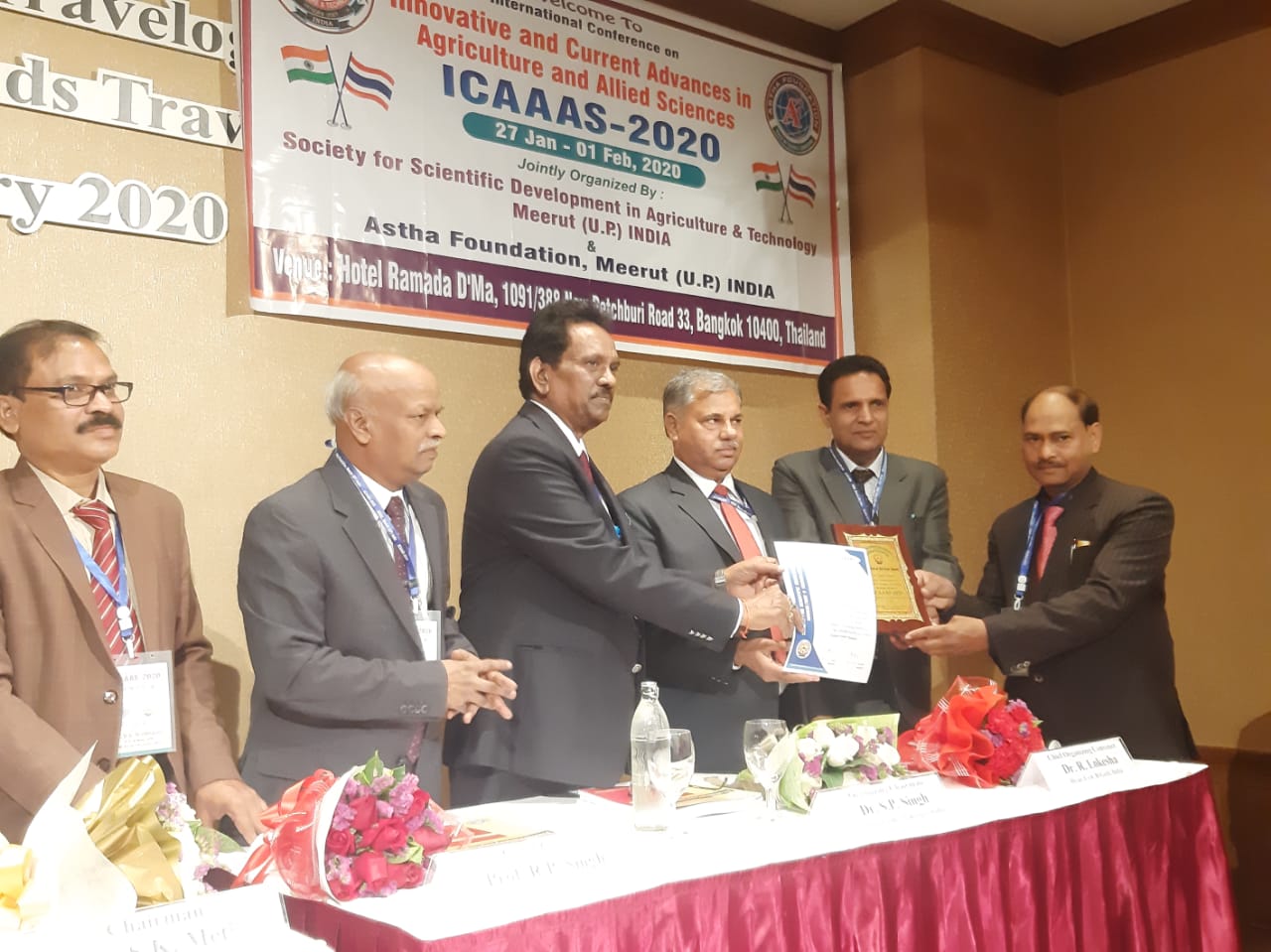

| Name | : | Dr. Rajeev Kumar |  |
| Date of Birth | : | 30.12.1977 | |
| Designation | : | Professor & Head | |
| College Department | : | College of Agriculture Department of Agricultural Biochemistry |
|
| Contact Info | |||
| Office Info | Personal Info | ||
| Phone : Mobile: : – Email : –hod.agbio@csauk.ac.in |
Mobile : 9411056989 Email :rajeevkumard699@gmail.com |
||
| See more details | |||
| Crop | Variety |
| Wheat /td> | Deva, Indra, Ujiyar, Gangotri, Prasad, Gomti, Halna, Atal, Maghar, Shatabhi, K1006, Naina |
| Barley | Geetanjali, Preeti, Ritabhara, Haritma, Narmada, Huskless, Manjula,K1155 |
| Maize | Azad Uttam, Azad Kamal, Sharadmani |
| Toria | Bhawani, Pitambri |
| Rai | Varuna, Rohini, Vaibhav, Kanti, Maya, Vardan, Urvashi, Basanti, Ashirvad |
| Groundnut | Prakash, Chitra, Kaushal, Amber, TG-37-A |
| Linseed | Gaurav, Shikha, Parvati, Rashmi, Sheela, Sharda, Shekhar, Padmini |
| Sesame | T 78, Shekhar, Pragati, T 13, Tarun |
| Gram | KWR 108, KGD 1168, Sadabahar, Avrodhi |
| Lentil | K 75, Shekhar-2, Shekhar-3, KL S218 |
| Moong | T 44, K 851 |
| Pigeonpea | KA 32-1 (Amar), KA 91-25 (Azad) |
| Urd | Azad Urd 1, Shekhar 1, Azad Urd 2, Urd Shekhar 2, Urd Shekhar 3, KU 309, KU 96-3 |
| Coriander | Azad Dhaniya 1 |
| Bitter gourd | Kalyanpur Sona |
| Bottle gourd | Azad Harit, Azad Nutan, Azad Sankar 1 |
| Bean | Rajni, KT-2 |
| Chilli | Chanchal, Azad Mirch 1, Azad Achar 1 |
| Brinjal | KS 224, KS 235, Azad Hybird |
| Tomato | Azad T6, Azad T5, Azad T3, KS 118, KTH 1, KTH 2 |
| S.No. | Name & Designation | seminar/symposia/conferences | Place | Date |
| 1. | Dr. Nand Kumar | Scientist of the year Award | Bangkok (Thailand) | Jan 27- Feb 01,2020 |
| 2. | Dr. Alka Katiyar Guest Faculty | Young Scientist Award | CSAUA&T (Kanpur) | Feb 22, 2020 |


| Ph. D. Programme | ||||
| S.No | Course No. | Title of Courses | Credit Hrs. | Semester |
| 1 | ABC-601 | Biochemistry of Nucleic Acids and Proteins | 3(2+1) | I |
| 2 | ABC-603 | Biochemistry of Crop Quality | 4(3+1) | I |
| 3 | ABC-602 | Immunochemistry | 2 (2+0) | II |
| 4 | ABC-604 | Agricultural Biotechnology | 3 (3+0) | II |
| 5 | ABC-605 | Biochemistry of Biotic and Abiotic Stresses | 3(3+0) | III |
| 6 | ABC-606 | Course Seminar | 1(1+0) | III |
| M.Sc. (Ag.) Programme | ||||
| S No. | Course No. | Title of Courses | Credit Hrs. | Semester |
| 1 | ABC-501 | Basic Biochemistry | 4 (3+1) | I |
| 2 | ABC-502 | Intermediary Metabolism | 3 (3+0) | I |
| 3 | ABC-503 | Enzymology | 3 (2+1) | II |
| 4 | ABC-505 | Techniques in Biochemistry | 3 (1+2) | II |
| 5 | ABC-507 | Plant Biochemistry | 3 (3+0) | II |
| 6 | ABC-504 | Molecular Biology | 3 (2+1) | III |
| 7 | ABC-509 | Food and Nutritional Biochemistry | 3 (2+1) | III |
| 8 | ABC-599 | Course Seminar | 3 (3+0) | III |
| 9 | Thesis | 15(15+0) | IV | |
| Undergraduate Programme | ||||
| B.Sc. Hons Agriculture, B.Sc. Hons in Forestry, B.Sc. Hons in Horticulture, B.Sc. Hons in Community Science | ||||
| S No. | Course No. | Title of Courses | Credit Hrs. | Semester |
| 1 | ABC-111 | Fundamentals of Biochemistry and Biotechnology | 3(2+1) | I |
| 2 | BSH-112 | Elementary Plant Biochemistry | 2(1+1) | I |
| 3 | SBS-113 | Plant Biochemistry | 2(1+1) | I |
| 4 | BSH-202 | Biochemistry | 3(2+1) | III |
| Name | : | Dr. Rajeev Kumar |  |
| Date of Birth | : | ||
| Designation | : | Professor & Head | |
| College Department | : | College of Agriculture Department of Agricultural Biochemistry |
|
| Contact Info | |||
| Office Info | Personal Info | ||
| Phone : Mobile: : – Email : –hod.agbio@csauk.ac.in |
Mobile : 9411056989 Email :rajeevkumard699@gmail.com |
||
| See more details | |||
| Employee ID | : | CSAN 007 |  |
| Name | : | Dr. Nand Kumar | |
| Department | : | Agricultural Biochemistry | |
| Designation | : | Assistant Professor/Assistant Biochemist(Rice) | |
| : | nandkumar@csauk.ac.in | ||
| E-mail2 | : | nandkumar0512@gmail.com | |
| Mobile No. | : | 09415441077, 7007262458 | |
| Qualification | : | Ph. D in Agricultural. Biochemistry | |
| Key Area/Specialization | : | Rice Quality |